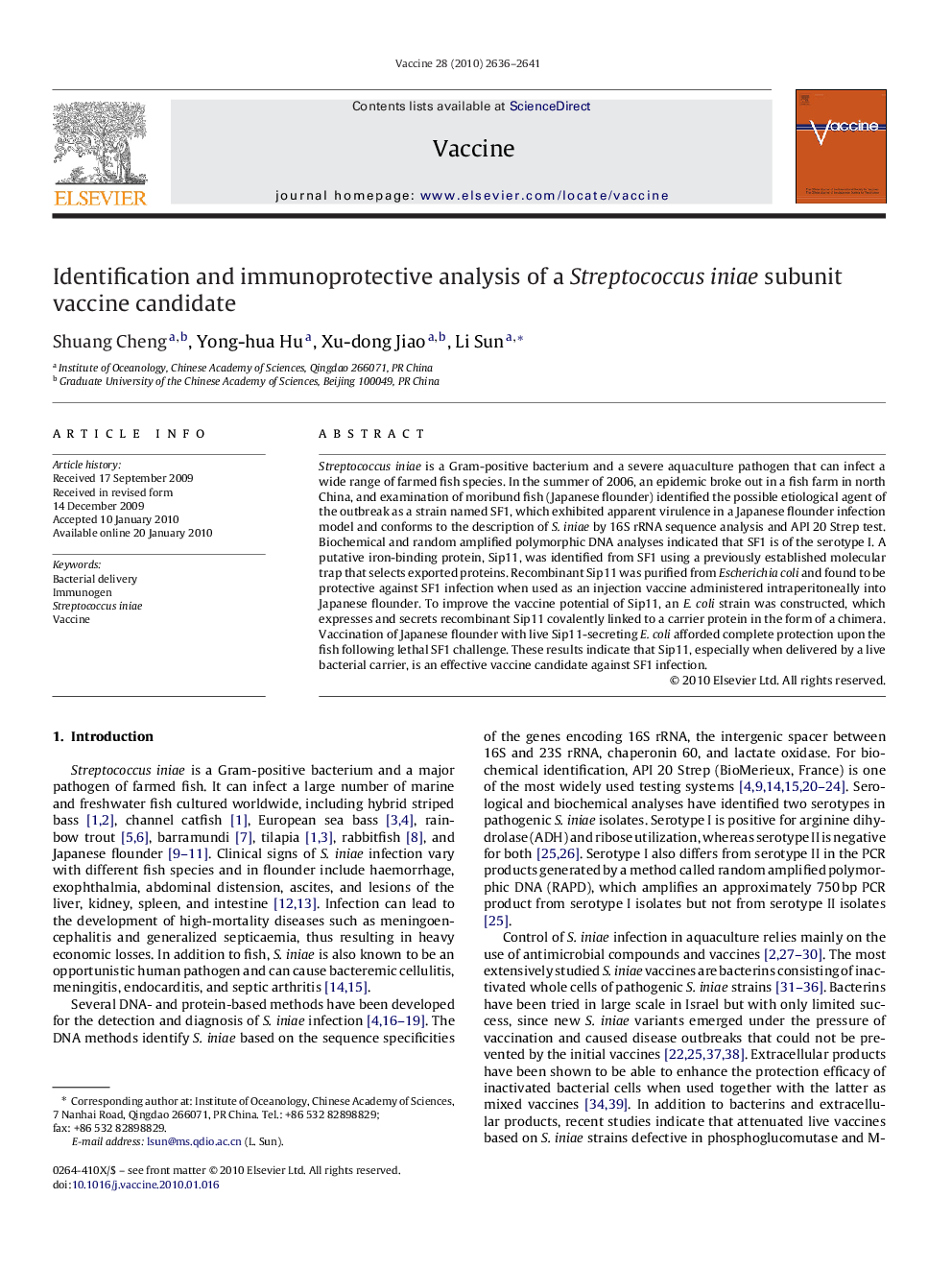| Article ID | Journal | Published Year | Pages | File Type |
|---|---|---|---|---|
| 2404161 | Vaccine | 2010 | 6 Pages |
Streptococcus iniae is a Gram-positive bacterium and a severe aquaculture pathogen that can infect a wide range of farmed fish species. In the summer of 2006, an epidemic broke out in a fish farm in north China, and examination of moribund fish (Japanese flounder) identified the possible etiological agent of the outbreak as a strain named SF1, which exhibited apparent virulence in a Japanese flounder infection model and conforms to the description of S. iniae by 16S rRNA sequence analysis and API 20 Strep test. Biochemical and random amplified polymorphic DNA analyses indicated that SF1 is of the serotype I. A putative iron-binding protein, Sip11, was identified from SF1 using a previously established molecular trap that selects exported proteins. Recombinant Sip11 was purified from Escherichia coli and found to be protective against SF1 infection when used as an injection vaccine administered intraperitoneally into Japanese flounder. To improve the vaccine potential of Sip11, an E. coli strain was constructed, which expresses and secrets recombinant Sip11 covalently linked to a carrier protein in the form of a chimera. Vaccination of Japanese flounder with live Sip11-secreting E. coli afforded complete protection upon the fish following lethal SF1 challenge. These results indicate that Sip11, especially when delivered by a live bacterial carrier, is an effective vaccine candidate against SF1 infection.
